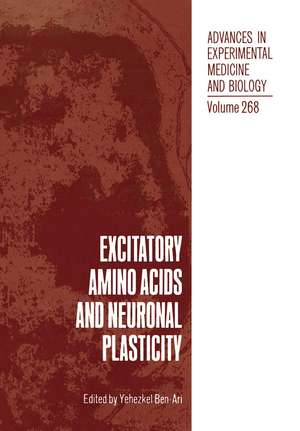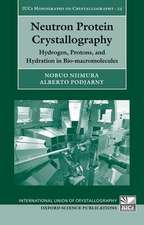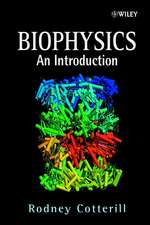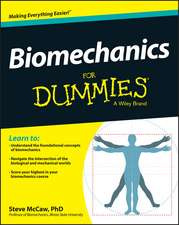Excitatory Amino Acids and Neuronal Plasticity: Advances in Experimental Medicine and Biology, cartea 268
Editat de Yehezkel Ben-Arien Limba Engleză Paperback – 30 iul 2013
Din seria Advances in Experimental Medicine and Biology
- 9%
 Preț: 719.56 lei
Preț: 719.56 lei - 5%
 Preț: 717.00 lei
Preț: 717.00 lei - 5%
 Preț: 717.00 lei
Preț: 717.00 lei - 15%
 Preț: 640.24 lei
Preț: 640.24 lei - 5%
 Preț: 715.71 lei
Preț: 715.71 lei - 5%
 Preț: 716.28 lei
Preț: 716.28 lei - 20%
 Preț: 691.93 lei
Preț: 691.93 lei - 5%
 Preț: 1031.00 lei
Preț: 1031.00 lei - 5%
 Preț: 820.42 lei
Preț: 820.42 lei - 5%
 Preț: 716.28 lei
Preț: 716.28 lei - 15%
 Preț: 641.38 lei
Preț: 641.38 lei - 5%
 Preț: 717.20 lei
Preț: 717.20 lei - 5%
 Preț: 715.35 lei
Preț: 715.35 lei - 5%
 Preț: 1113.83 lei
Preț: 1113.83 lei - 20%
 Preț: 1161.71 lei
Preț: 1161.71 lei - 5%
 Preț: 1170.51 lei
Preț: 1170.51 lei - 18%
 Preț: 1119.87 lei
Preț: 1119.87 lei - 5%
 Preț: 1288.48 lei
Preț: 1288.48 lei - 5%
 Preț: 1164.67 lei
Preț: 1164.67 lei - 5%
 Preț: 1101.73 lei
Preț: 1101.73 lei - 18%
 Preț: 1123.67 lei
Preț: 1123.67 lei - 5%
 Preț: 1435.64 lei
Preț: 1435.64 lei - 20%
 Preț: 1044.10 lei
Preț: 1044.10 lei - 18%
 Preț: 946.39 lei
Preț: 946.39 lei - 5%
 Preț: 292.57 lei
Preț: 292.57 lei - 18%
 Preț: 957.62 lei
Preț: 957.62 lei - 18%
 Preț: 1235.76 lei
Preț: 1235.76 lei - 5%
 Preț: 1231.55 lei
Preț: 1231.55 lei - 5%
 Preț: 1292.30 lei
Preț: 1292.30 lei - 5%
 Preț: 1102.10 lei
Preț: 1102.10 lei - 18%
 Preț: 1132.81 lei
Preț: 1132.81 lei - 5%
 Preț: 1165.19 lei
Preț: 1165.19 lei - 5%
 Preț: 1418.48 lei
Preț: 1418.48 lei - 5%
 Preț: 1305.63 lei
Preț: 1305.63 lei - 18%
 Preț: 1417.72 lei
Preț: 1417.72 lei - 18%
 Preț: 1412.99 lei
Preț: 1412.99 lei - 24%
 Preț: 806.15 lei
Preț: 806.15 lei - 18%
 Preț: 1243.29 lei
Preț: 1243.29 lei - 5%
 Preț: 1429.44 lei
Preț: 1429.44 lei - 5%
 Preț: 1618.70 lei
Preț: 1618.70 lei - 5%
 Preț: 1305.12 lei
Preț: 1305.12 lei - 18%
 Preț: 1124.92 lei
Preț: 1124.92 lei - 5%
 Preț: 1097.54 lei
Preț: 1097.54 lei - 15%
 Preț: 649.87 lei
Preț: 649.87 lei - 5%
 Preț: 1097.54 lei
Preț: 1097.54 lei - 18%
 Preț: 945.79 lei
Preț: 945.79 lei - 5%
 Preț: 1123.13 lei
Preț: 1123.13 lei - 20%
 Preț: 816.43 lei
Preț: 816.43 lei
Preț: 736.39 lei
Preț vechi: 775.14 lei
-5% Nou
Puncte Express: 1105
Preț estimativ în valută:
140.92€ • 145.59$ • 117.22£
140.92€ • 145.59$ • 117.22£
Carte tipărită la comandă
Livrare economică 20 martie-03 aprilie
Preluare comenzi: 021 569.72.76
Specificații
ISBN-13: 9781468457711
ISBN-10: 1468457713
Pagini: 544
Ilustrații: X, 530 p. 143 illus.
Dimensiuni: 178 x 254 x 29 mm
Greutate: 0.93 kg
Ediția:Softcover reprint of the original 1st ed. 1990
Editura: Springer Us
Colecția Springer
Seria Advances in Experimental Medicine and Biology
Locul publicării:New York, NY, United States
ISBN-10: 1468457713
Pagini: 544
Ilustrații: X, 530 p. 143 illus.
Dimensiuni: 178 x 254 x 29 mm
Greutate: 0.93 kg
Ediția:Softcover reprint of the original 1st ed. 1990
Editura: Springer Us
Colecția Springer
Seria Advances in Experimental Medicine and Biology
Locul publicării:New York, NY, United States
Public țintă
ResearchCuprins
Mechanisms and Expression of Receptors.- Glutamate Receptors in Cultures of Mouse Hippocampus Studied with Fast Applications of Agonists, Modulators and Drugs.- Measuring and Controlling the Extracellular Glycine Concentration at the NMDA Receptor Level.- The Glycine Coagonist Site of the NMDA Receptor.- The PCP Site of the NMDA Receptor Complex.- Antagonists of NMDA-Activated Current in Cortical Neurons: Competition with Glycine and Blockade of Open Channels.- Types of EAA Receptors.- Experiments with Kainate and Quisqualate Agonists and Antagonists in Relation to the Sub-Classification of ‘Non-NMDA’ Receptors.- Homocysteic Acid as Transmitter Candidate in the Mammalian Brain and Excitatory Amino Acids in Epilepsy.- Specific Quisqualate Receptor Ligand Blocks Both Kainate and Quisqualate Responses.- Molecular Characterization, Ultrastructural Localization and Gene Cloning of the Chick Cerebellar Kainate Receptor.- Intracellular Messengers Associated with Excitatory Amino Acid (EAA) Receptors.- The Glycine Site on the NMDA Receptor: Pharmacology and Involvement in NMDA Receptor-Mediated Neurodegeneration.- Evidence for Glutamate Receptor Subtypes from in Vivo Electrophysiology: Studies with HA-966, Quinoxalinediones and Philanthotoxin.- Characterization of Membranal and Purified NMDA Receptors.- Ca++ and Excitatory Amino Acids.- Mechanisms Underlying Excitatory Amino Acid-Evoked Calcium Entry in Cultured Neurons from the Embryonic Rat Spinal Cord.- Topographical Heterogeneity of Glutamate Agonist-Induced Calcium Increase in Hippocampus.- Protection by Natural and Semisynthetic Gangliosides from Ca2+-Dependent Neurotoxicity Caused by Excitatory Amino Acid (EAA) Neurotransmitters.- EAA and in Vivo Development.- Periodic Inward Currents Triggered by NMDA in ImmatureCA3 Hippocampal Neurones.- GABA Mediated Synaptic Events in Neonatal Rat CA3 Pyramidal Neurons in Vitro: Modulation by NMDA and Non-NMDA Receptors.- Neural Networks and Synaptic Transmission in Immature Hippocampus.- A Role of NMDA Receptors and Ca2+ Influx in Synaptic Plasticity in the Developing Visual Cortex.- Spontaneous and Evoked NMDA-Receptor Mediated Potentials in the Entorhinal Cortex of the Neonate Rat in Vitro.- Learning by Seeing: N-Methyl-D-Aspartate Receptors and Recognition Memory.- The Role of the NMDA Receptor in the Development of the Frog Visual System.- EAA and in Vitro Development.- Excitatory Amino Acids, Growth Factors, and Calcium: A Teeter-Totter Model for Neural Plasticity and Degeneration.- Trophic Effects of Excitatory Amino Acids in the Developing Nervous System.- Mechanisms of Excitatory Amino Acid-Induced Stimulation of GABAergic Synaptic Activity in Cultures from the Rat Superior Colliculus.- The Role of Taurine and Glutamate during Early Postnatal Cerebellar Development of Normal and Weaver Mutant Mice.- Regulation of Neurite Outgrowth from Cerebellar Granule Cells in Culture: NMDA Receptors and Protein Kinase C.- Regulation of GABAA Currents by Excitatory Amino Acids.- EAA and LTP.- Long-Term Potentiation in the Dentate Gyrus in Vivo is Associated with a Sustained Increase in Extracellular Glutamate.- Long Term Potentiation is not Associated with a Sustained Enhanced Release of Glutamate in the Rat Hippocampus in Vivo and in Vitro.- Postsynaptic Mechanisms Involved in Long-Term Potentiation.- Identifying and Localizing Protein Kinases Necessary for LTP.- Delayed Onset of Potentiation in Neocortical EPSPs during Long-Term Potentiation (LTP) — A Postsynaptic Mechanism or Heterogeneous Synaptic Inputs ?.- Local Circuit ConnectionsMediated by NMDA and Non-NMDA Receptors in Slices of Neocortex.- Modulation of the Responsiveness of Cerebellar Purkinje Cells to Excitatory Amino Acids.- Proteins, Second Messengers and LTP.- The Role of Ependymin in Neuronal Plasticity and LTP.- The Role of Protein Kinase C Substrate B-50 (GAP-43) in Neurotransmitter Release and Long-Term Potentiation.- Different Mechanisms and Multiple Stages of LTP.- Extracellular Proteases and S100 Protein in Long-Term Potentiation in the Dentate Gyrus of the Anaesthetized Rat.- Modulation of the Induction of Long-Term Potentiation in the Hippocampus.- Roles of Metabotropic and Ionotropic Glutamate Receptors in the Long-Term Potentiation of Hippocampal Mossy Fiber Synapses.- Effects of a Neurotrophic Factor (FGF) on Development, Regeneration and Synaptic Plasticity of Central Neurons.- Trans-Synaptophobia.- EAA and Reactive Plasticity.- Kindling, Prenatal Exposure to Ethanol and Postnatal Development Selectively Alter Reponses of Hippocampal Pyramidal Cells to NMDA.- Sprouting of Mossy Fibers in the Hippocampus of Epileptic Human and Rat.- Molecular Markers of Reactive Plasticity.- Transplantation of Developing Hippocampal Neurons to Ischemic and Excitotoxic Lesions of the Adult Rat Hippocampus.- Changes in Synaptic Transmission in the Kindled Hippocampus.- NMDA Receptor Plasticity in the Kindling Model.- NMDA-Receptors are Involved in Synaptic Plasticity Following Partial Denervation of CA1 Hippocampal Cells.- EAA and Anoxia.- Anoxia and NMDA Receptors.- Modulation of ATP Sensitive K+ Channels: A Novel Strategy to Reduce the Deleterious Effects of Anoxia.- Effects of Transient Forebrain Ischemia in Area CA1 of the Gerbil Hippocampus: An in Vitro Study.- Acute Brain Injury, NMDA Receptors, and Hydrogen Ions: Observations in Cortical Cell Cultures.- Mechanisms of Excitatory Amino Acid Neurotoxicity in Rat Brain Slices.










